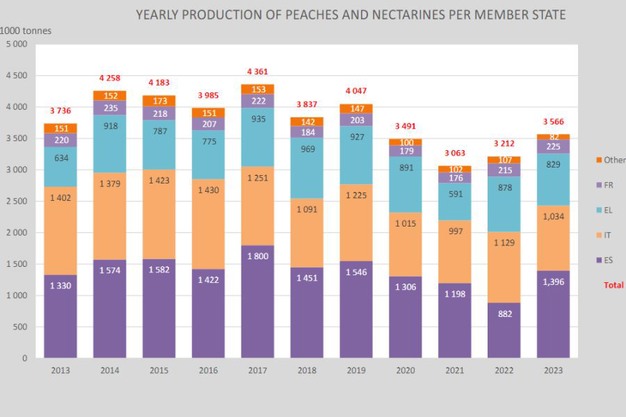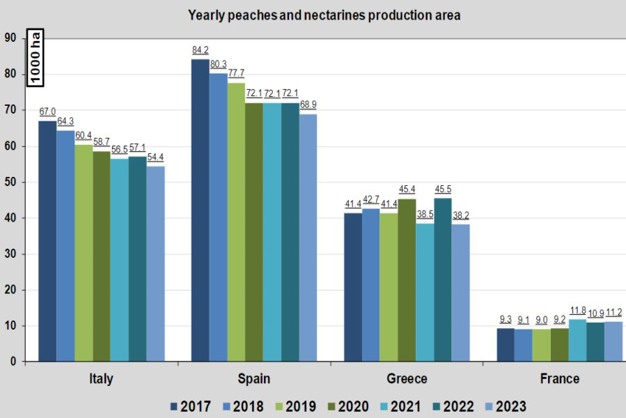The European Union (EU) market for peaches and nectarines has shown interesting trends in recent years, particularly in production, trade, and pricing. The production area of peaches and nectarines across EU member states has seen slight fluctuations from 2017 to 2023. Notably, Italy, Spain, Greece, and France continue to dominate the market. For instance, Italy consistently remains one of the top producers, with a production area ranging from 54,000 to 67,000 hectares between 2017 and 2023.

In terms of production output, the EU's total production of peaches and nectarines in 2023 amounted to approximately 3,575,000 tonnes. The production of fresh peaches and nectarines has been fluctuating over the years, with peaks in 2019 (4,049,000 tonnes) and declines in subsequent years. Despite these fluctuations, the EU remains a key player in the global market for these fruits.
The price trends are also noteworthy. As of week 40 in 2024, the average price of peaches in the EU was €119 per 100 kg, showing a slight decrease of 1.2% compared to the same week in 2023. However, countries like Italy saw a price increase of 9%, whereas Spain faced a 15% decrease. This reflects the varying market conditions in different member states.

On the trade front, the EU's peach and nectarine exports have decreased from 259,000 tonnes in 2019 to 137,000 tonnes in 2023, while imports have remained relatively stable. This reduction in exports could be attributed to production challenges and changing market dynamics.
To view the full report, click here.
For more information:
European Commission
Tel: +32 2 299 96 96
Website: www.commission.europa.eu
